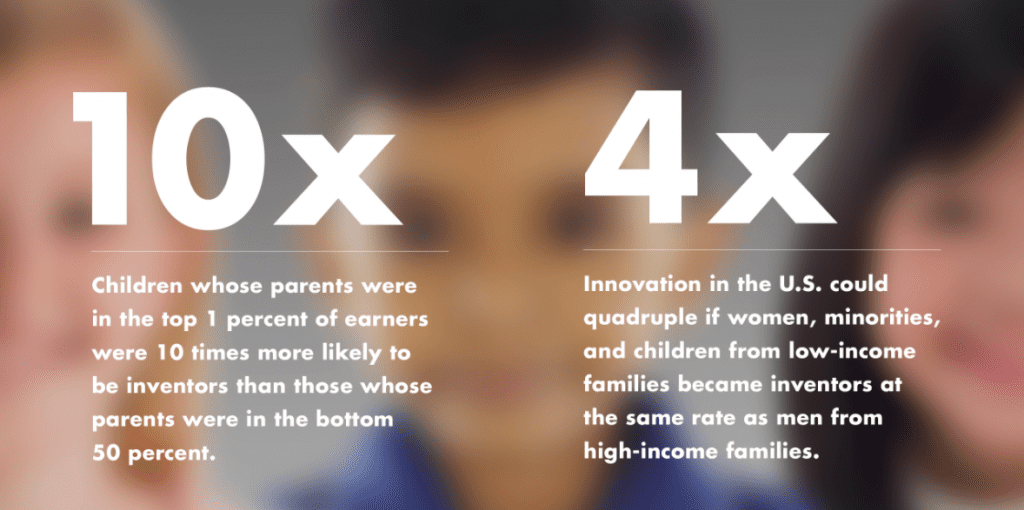Innovation has slowed in the U.S., stymying economic growth. To get back on track, the U.S. needs more low-income children, women, and minorities to become inventors — but that won’t be easy.

Innovation fueled economic growth in America for the past century, but since the 1970s, innovation (as measured by fundamental productivity growth) appears to have slowed [PDF] — from an annual increase of 1.9 percent to 0.7 percent — and so has economic growth.
A new study shows that, thanks to inequality, the U.S. has potentially missed out on millions of inventors during that time — what the researchers refer to as “lost Einsteins.” Kids born into the richest 1 percent of society are 10 times more likely to be inventors than those born into the bottom 50 percent — and “this is having a big effect on innovation,” MIT Sloan professor John Van Reenen said.
The research also shows that innovation in the U.S. could quadruple if women, minorities, and children from low-income families became inventors at the same rate as men from high-income families. Making that happen is the hard part, though. It means exposing more children to innovation when they are young — and the younger they are, the better.
The wealth factor.
Since innovation is largely seen as a means for economic growth, researchers at the Equality of Opportunity Project wanted to see what part childhood wealth plays on future innovation.The research [PDF], completed by Van Reenen alongside Raj Chetty, Xavier Jaravel, Neviana Petkova, and Alex Bell, showed stark results.
“The most striking thing was how sharp the relationship was between the wealth of your parents and whether you grew up to be an inventor or not,” John Van Reenen said.
By linking patent records with de-identified IRS data and school district records for more than one million inventors, the researchers found that, while ability does play some part in a child’s chance of becoming an inventor in the future, it is far from the biggest factor.
Instead, wealth played a much larger role. Among children who excelled in math in third grade, those whose families’ incomes fell into the highest fifth of the population were more than five times as likely to be inventors than those whose families’ incomes were in the lowest fifth.



